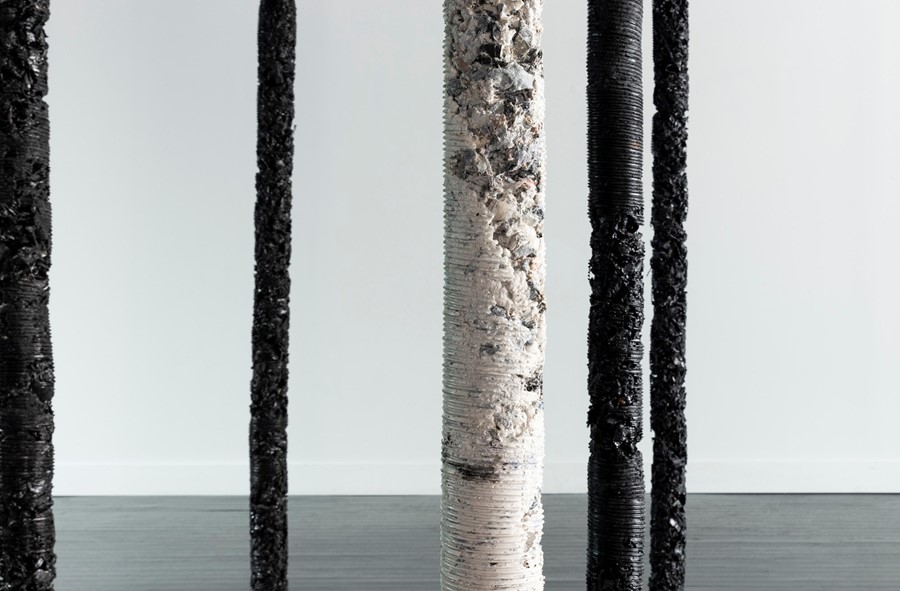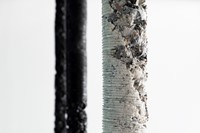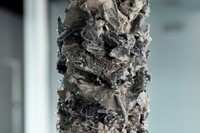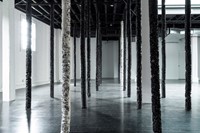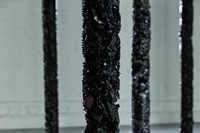Speaking to AnOther, the artist and former designer discusses his artistic practice and his new exhibition at von ammon co in Washington DC, Helmut Lang 63
The 1990s would not have looked the same without Helmut Lang. Architectural, structured, highly stylised and innately androgynous, his clothing defined an entire generation’s style. Yet the highly private creative auteur has moved away from fashion in the years since – the Austrian designer has not been involved with his eponymous label since 2005 – and successfully sidestepped into the world of art, with his largely sculptural work appearing in solo and group exhibitions around the world.
A new exhibition of his work opens at von ammon co in Washington DC this week, titled Helmut Lang 63, where Lang will show a series of suspended monochrome sculptures – textured, sticky and visceral. It is not easy to emerge in a new arena after such influence in another: Helmut Lang is doing just that with signature aplomb. Lang’s fashion design work does, however, come into play in Helmut Lang 63: the exhibition consists of site-specific sculptures made from shredded and compacted clothes cast in resin – the clothing is from Lang’s design archive, which was partially damaged in a studio fire. The destruction of the pieces inspired the artist to “crystallise [the clothes] in an abstract way for eternity and art”. Here, he tells AnOther more...
Francesca Gavin: What first attracted you to sculpture as a medium?
Helmut Lang: I don’t want to be defined as working in solely one medium. I felt that I wanted to be at the crossing of different disciplines and defy the classical notions of painting, sculpture and so on. My focus is to create two and three dimensional artworks in different mediums, predominantly built from found and readily available materials.
FG: Why did you want to destroy/rework your design archive?
HL: There was no intention to do so, and luckily the most important part of the archive was donated to the most important museums around the world just before we had a serious fire in the building that housed our studio at the time. So it was not a desire but a necessity, which I concluded after long consideration – that the damaged part of the archive might as well be crystallised in an abstract way for eternity and art.
FG: How did you start working with shredding and crushed found materials? What interests you about detritus in a wider sense?
HL: We had a shredding truck come in to do the shredding job and to transform thousands of pieces from the archive into raw material, which includes 30 years of work, transformed into a non-hierarchial mass.
FG: How does your artwork relate to your history as a designer – are there interests or motifs that overlap?
HL: Whatever I do, I do with my full dedication, investment and the maximum effort for an outcome I feel comfortable handing over to the audience.
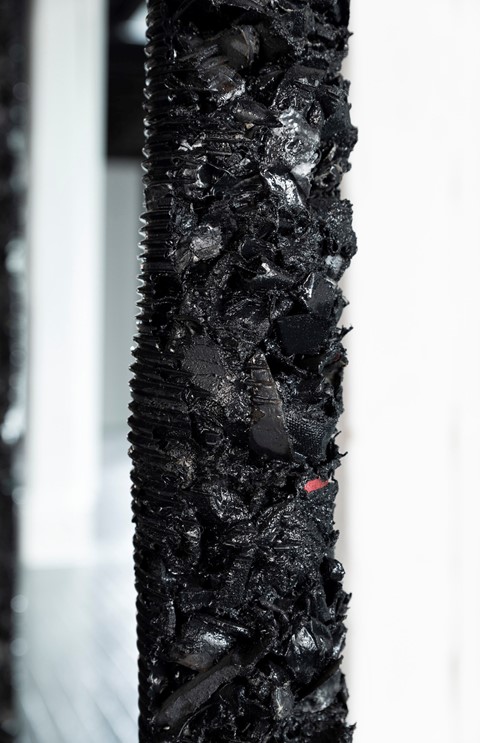
FG: How are you working with scale? How does that vary in the current show?
HL: Scale is something which varies just doing the production of the subject matter and then later on in the space where it is shown. The current show is a site specific installation, something which I have never done before in a gallery setting.
FG: How does time play into the work you are making?
HL: I take all the time that is necessary until I feel that a work is completed. Sometimes it takes a few months, sometimes a few years. And after that I let it stay around in the studio for quite some time and I revisit it to see if I want add or distract something from it, and I only release it when I feel confident to hand it over.
FG: Tell me about the pixelated monochrome film on the gallery website that accompanies the show?
HL: It is a documentation of the actual shredding process which took place in 2010 to prove authenticity of the content of the artwork.
FG: What interests you about monochrome? The pigments you are using are largely white and black.
HL: I think the nature of my practice is at the moment asking for monochromes, but there is sometimes also colour involved, but that depends if it is a specific artistic necessity for the body of work. At the current show in Washington, we are showing only black and white, as a curated installation, but there is a wider variety of colour within that body of work.
Helmut Lang 63 is on show at von ammon co, Washington DC until November 2, 2019.
